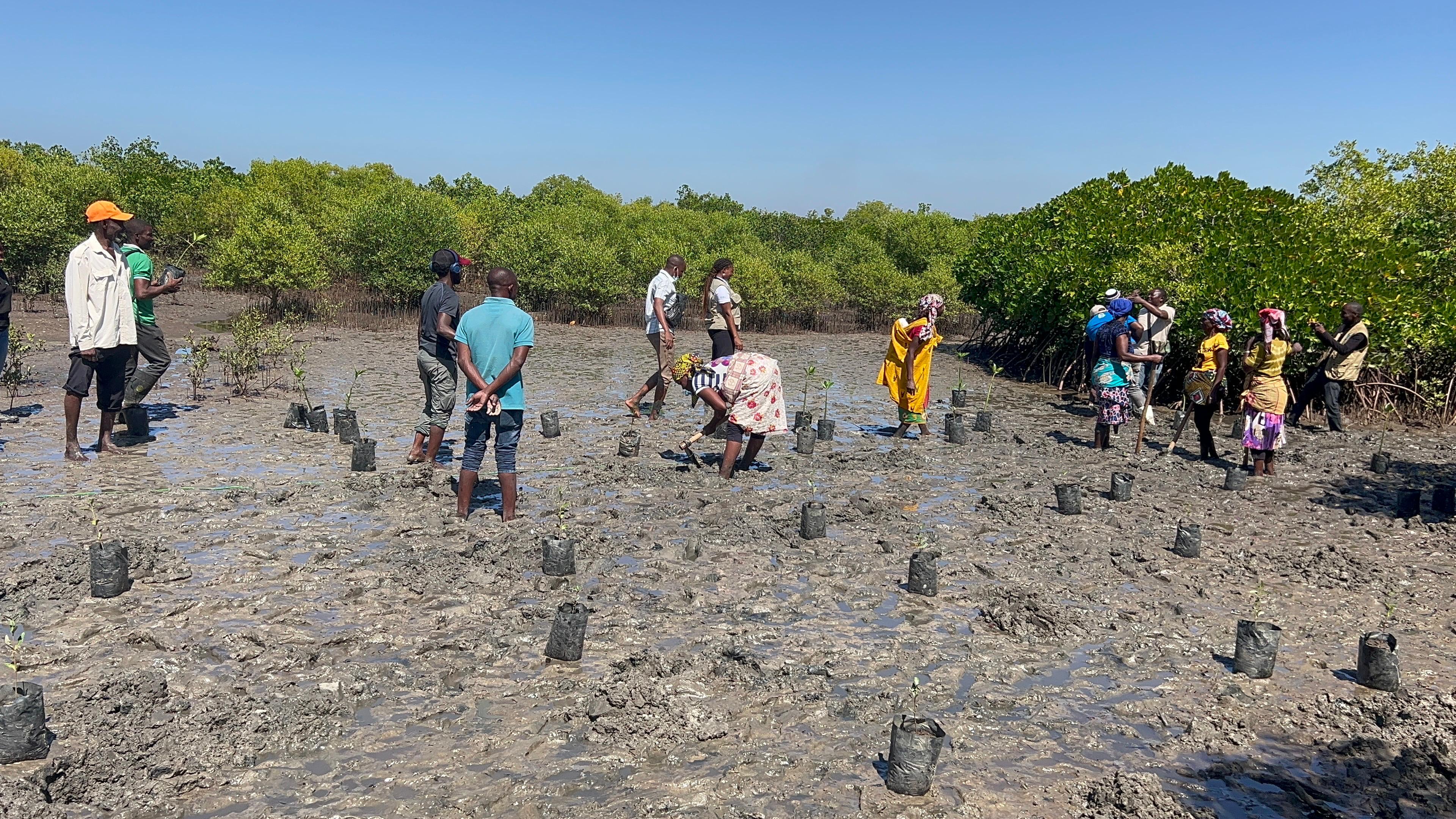The coastline of Mozambique contains some of the most biodiverse marine ecosystems in the world, Mangroves, Seagrasses and Coral Reefs, that harbor diverse species and support the livelihoods of millions of people who increasingly need protection and sustainable management in response to the impacts of human activity and climate change.
The Associação de Ajuda de Desenvolvimento de Povo para Povo (ADPP) is implementing a program to restore Mangrove ecosystems within the scope of the Blue Future Project. This initiative counts on the support of local communities and technical support from Eduardo Mondlane University (UEM) and Wildlife Conservation Society (WCS).
This is an ambitious program that aims to restore about 150 hectares of degraded areas, 50 hectares of which are intended for hydrological restoration and 100 hectares for seedling planting. ADPP has established a total number of 7 nurseries in the communities of Pangane, Napila, Niaca-Geba, Chicoma, Lunga, Cabaceira Grande and Quissanga-Nandoa and to date 82.000 seedlings of various species such as Avicennia marina, Bruguiera gymnorrhiza, Ceriops tagal and Rhizophora mucronata have been produced. The nurseries are all built using local material (stakes and straw for covering) and some synthetic material (such as nets). To ensure proper management of seedlings and maintenance of nurseries, ADPP mobilized and trained 70 community members: women, youth, elders and other vulnerable people to create nursery groups. The topics covered in the training were: mangrove ecosystem, restoration processes, management plans and nurseries monitoring.

Local communities planting seedlings on the International Day for the Conservation of the Mangrove Ecosystem in Cabaceira Grande, Mossuril.
The trained groups are responsible for collecting seeds and propagules, filling and tidying up the pots, nursery management and monitoring. Each group member receives a monetary incentive that serves as an extra source of income. With this amount, nurserymen can compete for financing windows for Small Businesses and support the livelihood of their families.
With the joint efforts of communities, NGOs, government and partners, a sustainable and blue future can be achieved for people and ecosystems on the East African Coast.